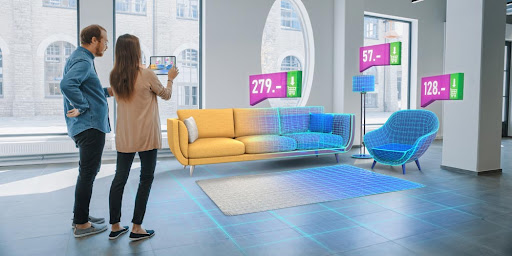How Will Customer Self-Service Portals Evolve in 2022?
Do you remember the days when you had no option but to call customer service for every query or issue? Long wait times and never-ending lift music were the banes of our life.
On top of this, the hours to call a customer service number were generally fixed, so if you missed the opportunity, you’d have to wait until the next day—I can hear the collective groans.
Thankfully, those days are long gone – customers have become empowered and they no longer want to rely on human customer support. Instead, they are seeking out the information themselves and finding the solutions to their own problems.
Customer self-service portals have proven to be a solid game-changer to the digital customer experience. But how will these portals evolve in the future?

What is a Customer Self-Service Portal?
Before we dive in, it’s important to understand what a customer self-portal is and what it means. A customer self-service portal is a combination of tools, websites or applications that offer information and resources to help users find answers to their queries without human interference. It primarily includes the following:
FAQs, How-to guides and videos, User manuals, Search functionality, Chatbots, Ticketing service, Online community, Help documents, Knowledge base/repository, Self-help articles.
Today, brands use customer self-service portals to shorten a user’s path to the information they need, reducing the effort needed to get there (while reducing support costs).
Combining Tools to Create a Powerful Customer Self-Service Portal
It’s no longer enough to provide access to the information or processes that people need in an isolated portal. This was great 10 years ago when digital access to anything felt magical and efficient on a different level.
Today, the best brands are seamlessly integrating their once isolated touchpoints into the customer’s journey. Chatbots are capable of showcasing community threads, a knowledge base that can link with How-To Guides, and so on.
Most importantly, if a customer wants to speak to a human by connecting these dots you can give customer service reps a better picture of what actions a customer has taken before offering solutions. Imagine how frustrating it is to read several help articles without finding a solution, to then be suggested to read the same help articles when speaking to a rep.
You only have to look at how the big platforms are gobbling up and absorbing other tools in order to offer a holistic platform, to see how important a seamless experience is.
Machine Learning Will Power Customer Self-Service Portals
Speaking broadly, machine learning means that computers are capable of taking actions based on patterns in data instead of relying on humans to “tell” them to do something. Moving into 2022, we’re expecting more projects to leverage machine learning.
When asking a question on a customer self-service portal, machine learning models match that query to probabilistic occurrences in the data set – in other words, it tries to match your question to one that it has already seen. And the more inputs it gets, the better it gets at recognising intent. This makes it easier for things like chatbots and search panels to find and show you the most relevant response, especially as queries get more complex.
Current portals typically provide a list of answers that the user chooses from, but machine learning will surface the right answer in the first go. We have already crossed paths with machine learning during our chatbot project with DS Automobiles:
Voice Tools For The Future of Customer Self-Service Portals
With the continuing rise of improvements in voice recognition, voice search (for both internal and external customer service) will also play a part in the future of customer self-service portals in 2022 and beyond.
If you are old enough, you may have scarring memories of being prompted to input voice commands when calling customer service lines.
Thankfully, Alexa and Google Home came along and forced progress and mass adoption.
The technology can now confidently interpret everyday language and turn the questions you speak into text. Self-service portals can then use that text query to find the relevant information and return a spoken answer quickly—much the same way a typed input would.
Expect to see more adoption, especially for those moments when your hands are busy – like driving and wanting to know what the light on the dashboard means (hint: it’s never good) or when cooking and needing to ask a question while your hands are covered in batter.
Augmented Reality (AR) Customer Self-Service
AR and VR are at an interesting inflection point, with Meta (Formerly Facebook) announcing their plans for a metaverse turning attention once again to these immersive technologies.
In particular, we’ve seen brands leveraging the visual aspect of AR as a resource for customer self-maintenance—for example, our project with Hitachi using AR to monitor, diagnose and repair hardware.
Alongside self-maintenance, expect brands to explore how AR can be used to streamline customer journeys by allowing them to visualise products in the desired context e.g. overlaying how an EV charging point would fit beside their house.
Include prompts for more detailed product information and you can cut down the need for queries and allow customers to find out the information for themselves.

The Crusade For More Targeted Answers
Customer self-service portals are getting better at separating the information you need and information you don’t. For instance, let’s say a self-service portal finds a help article with the answer to your question. Rather than just providing a link to the full document, an AI interface could instead show you the exact portion of the document that is relevant.
Google already does this in its search results with ‘Position Zero’, for example.
The Shift in Customer Self-Service
Self-service is becoming the norm as customers are expecting increasingly effortless experiences. From having more targeted answers, augmented reality, machine learning and voice tools, it is becoming increasingly evident that customer service experiences are improving as we find new ways to advance technologically.
Especially post-pandemic, more and more people are relying on digital services to help them with whatever they need and that includes customer self-service portals.

Your Digital Customer Self-Service Portal
Thanks to the pandemic, when it comes to customer self-service portals is no longer a trend – it’s an expectation. We have moved into a customer experience arms race. And at 4 Roads, we are constantly looking at how intelligent self-service can help build better relationships with consumers.
You can find out more about how to provide a seamless customer experience by watching our free webinar; The Age Of Convenience.
